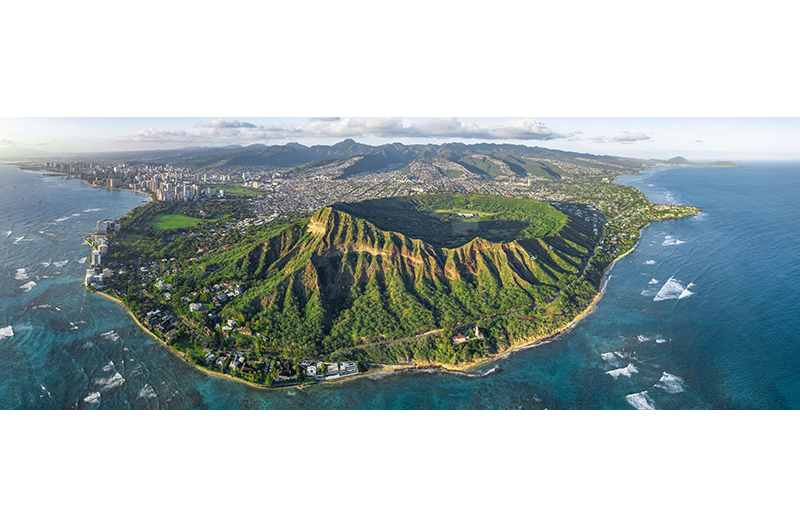For all its natural beauty, welcoming people and myriad other charms, Hawaii does have its share of challenges economically, which impact the islands’ food store operators.

Alexis Chapman, director of operations for the Hawaii Food Industry Association in Honolulu, on the island of Oahu, said the state’s economy is growing but still faces some unique challenges.
“The impacts of the tragic Maui fires in 2023 were wide reaching and ongoing,” she said. “We also have an aging population, population decline and a very low unemployment rate, which can create workforce challenges.”
In its 2024 North American Wildfires report, last updated Oct. 4, the Center for Disaster Philanthropy noted that “Maui is still recovering from devastating wildfires that burned in Lahaina and Kula beginning the week of Aug. 6, 2023. The Lahaina fire was the worst natural hazard disaster in Hawaii’s history and the fifth-deadliest wildfire in U.S. recorded history.”
Initial estimates to rebuild the town of Lahaina are estimated to reach at least $5.5 billion, and recovery is expected to take decades.
On the labor front, Hawaii’s unemployment rate was 2.9 percent in October, while the overall U.S. rate was 4.1 percent, according to the Bureau of Labor Statistics.
The state’s labor shortage is a top concern for Hawaii’s grocers and others in the food industry, Chapman said, with filling skilled labor positions the most challenging of all.
Finding solutions is high on the agenda at HFIA, which is run by President/Executive Director Lauren Zirbel and Chapman, with the help of a couple of key freelancers.
A Vermont native who has been in Hawaii for about 17 years, Chapman said HFIA advocates for programs that support internships and on-the-job training. “Those can really help people get their foot in the door.”
And that can be the start of a lifelong career.
“It’s really an industry where you can come in and work your way up,” she said. “We want to get young people interested in it, understand how important it is and understand how many opportunities there are in the food industry and help bridge that workforce gap a little bit.”
HFIA participates in job fairs and does outreach to high schools. Chapman shares the range of opportunities in the industry – nutritionist, store/department manager, human resources, advertising, marketing, agriculture, food science and more.
“It’s great to see them learn about it and get more interested,” she said.
Some grocers and food manufacturers offer internships and/or scholarships in hopes of attracting new talent.
Another reality impacting the labor pool is that it’s expensive to live in Hawaii. The population has been declining over the past few years, Chapman noted, as people who may want to stay there simply can’t afford to. Hawaii has the highest cost of living in the U.S., due to a variety of factors – including the long distance goods must travel to the islands – and the median home price verging on $1 million.
“Groceries obviously are more expensive, electricity is more expensive and gas is [about] $4.60 a gallon, so it’s really hard. We want these kids to stay and be a part of this industry and be able to raise their kids here and do all that,” she said, but those are real obstacles.
[RELATED: Populous West Home To Dynamic, Diverse Grocery Market]
Competing for grocery dollars
Independent grocers fill an important role in Hawaii’s grocery landscape.
“We’re very fortunate in Hawaii to have so many independent grocers, and they are vital to our communities and our state,” Chapman said.
These include KTA Super Stores, Foodland, Tamura’s Market, Okimoto Corp. and ABC Stores.
Many remain in the hands of the founding families, “which is really great,” she said. But mainland chains also operate on the islands, primarily on the Big Island (Hawai’i) and the most populated island (Oahu).
Safeway operates 23 stores in Hawaii. Target now has 10 stores in the state; Walmart has nine discount stores and two Sam’s Clubs; Costco has eight warehouse clubs; and Whole Foods Market has four stores.
The 10th Target just opened in late October, at 2345 Kuhio Ave. in Honolulu. The 78,000-square-foot location employs about 175 people and features murals echoing Hawaii’s land, mountains and ocean.
A light display over the escalator mimics rain falling on the mountains, and a wood feature wall has the outline of the Diamond Head Crater. It also has a Starbucks.
Some of the busiest Costcos in the country are in Hawaii, Chapman noted. An internet search brings up multiple references to the Iwilei store in Honolulu as the busiest of all. That may be partially due to the fact that it also serves as a Costco Business Center, selling to convenience stores, hotels and other businesses.
Perennial industry concerns
Hawaii is “the most isolated population center on the planet; feeding 1.4 million people out here is hard work,” said Chapman, making food affordability and accessibility “always a priority for our industry.”
According to a Hawaii Food Bank report, “The State of Food Insecurity in Hawai’i 2023,” nearly one in three households – 30 percent – was food insecure.
Chapman said two legislative measures last year brought some much-needed federal dollars into the fight against food insecurity.
One was funding for the Double Up Food Bucks program, which gives SNAP users twice the purchasing power when buying local produce.
A number of grocers are participating in “Da Bux,” as it is referred to in Hawaii, but “we need more funding to get more grocers to participate,” Chapman said. “We’re really working on that over the next few years.
“We like to say [Da Bux] is a win-win-win, because it’s obviously a win for the farmers, because it’s a great way to incentivize people to buy local produce. Then it’s a huge win for the people that are using it, because it makes these great local healthy foods so accessible. And it’s a win for retailers, because people know, ‘I can go in there and get two heads of lettuce for the price of one.’”
Another measure that secured funding was the Summer EBT Program – dubbed “Sun Bucks” – which provides extra money to SNAP families to buy food for children during the summer months.
Inflation, felt in markets across the country, stings a bit more in Hawaii “because if things are already 10 percent or 20 percent more expensive, 10 percent inflation is even more here,” Chapman said. “That’s why supporting Da Bux and Summer EBT are important, because we know that people are struggling, and food insecurity is a big problem here.
“Our retailer members do what they can to keep prices down,” she added, and they actively support their communities, whether giving to the local food bank, donating to a soccer team or other group that needs help. “They’re doing a lot.”
HFIA lobbies for tax removal
The association also continues to lobby for groceries to be tax exempt. Hawaii is the only state in the U.S. that has a general excise tax. The GET is 4.0 percent, then county tax is added.
On all four of Hawaii’s counties – Honolulu, Hawaii, Kauai and Maui – the current effective rate is 4.712 percent, according to the State of Hawaii Department of Taxation.
“HFIA has advocated for many, many years to have the GET eliminated from food. And especially now … getting that 4 percent reduction in everybody’s grocery bill would be huge,” Chapman said. “For the average family, it’s over $1,000 a year that they’re paying in grocery taxes … The way we calculate it, it ends up being like a week’s worth of groceries.”
The GET funds a large portion of the state budget, so there is always resistance from lawmakers, and “it’s very hard to exempt just one category of things,” Chapman said. “But we really think that would be a step in the right direction, so it is something we advocate for. It’s a little Sisyphean; we’re kind of pushing that boulder up the hill every year. We keep working at it.”

